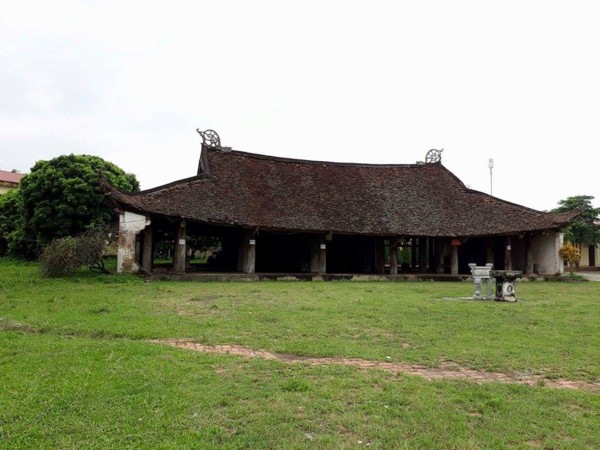A historic communal house (dinh in Vietnamese) in the northern province of Vinh Phuc is close to collapse because of dithering by local authorities. The structure classed as a national historic relic has rapidly deteriorated during the past three years.

Sophisticated design: Đình Chu Communal House, a national relic that has deteriorated over the past three years.
The Đình Chu Communal House in Đình Chu Commune in Lập Thạch District was recognised as a national historic site in 1996 and classed as a provincial treasure.
The building was constructed in 1803 during the reign of Gia Long King (1780-1820) and was renovated in 1846 under the Thiệu Trị reign (1841-1847).
The solid, low structure is built of wooden pillars and beams carved with great sophistication. Despite its classification, the building has seriously declined in the past three years.
Đình Làng Việt, a group acting to protect communal houses, has gathered signatures from 10,000 people in a petition letter to call for urgent action by the Vĩnh Phúc People’s Committee.
“In 2016, after a series of articles on the state of the building, local agencies visited the site and planned renovation in 2018,” Nguyễn Đức Lộc, a member of the group said. “However, following the present severe weather, it is predicted the structure may collapse at any time."
The group have asked authorities to build a temporary metal roof over the building and some support columns to prevent collapse.
In reply, the People’s Committee sent a letter signed by Trần Thị Minh Lợi, deputy head of the province’s People’s Committee Office, on August 28, saying that the construction had been listed as a renovation project financed by the provincial budget.
In turn, the committee also forwdard the letter to concerned agencies. However, head of the protection group, Nguyễn Đức Bình, said he was worried by the slow reaction of local authorities.
“Recent incidents in the Thần Quy Communal House, in Phú Xuyên District on the outskirts of Hà Nôi and the Đình Chu Communal House reflect the insensitivity by local heritage managers,” he told Việt Nam News. “Such neglect is no longer acceptable.”
Architectural professor Khuất Tân Hưng warned that a relic abandoned for a long time often resulted in more rapid deterioration.
Prof Hưng said the ancient monument should be assigned to the local community to use and protect as it was in ancient times.
The communal house has five halls arranged the shape of “J”. The central hall is reserved for the worship of the 18 Hùng kings, while the one at the back is dedicated to the village’s patron saint. Forty solid tree trunk columns support the building.
Communal houses are one of the oldest features of Vietnamese culture. Records of them stretch back as far as 1,500 years.— VNS